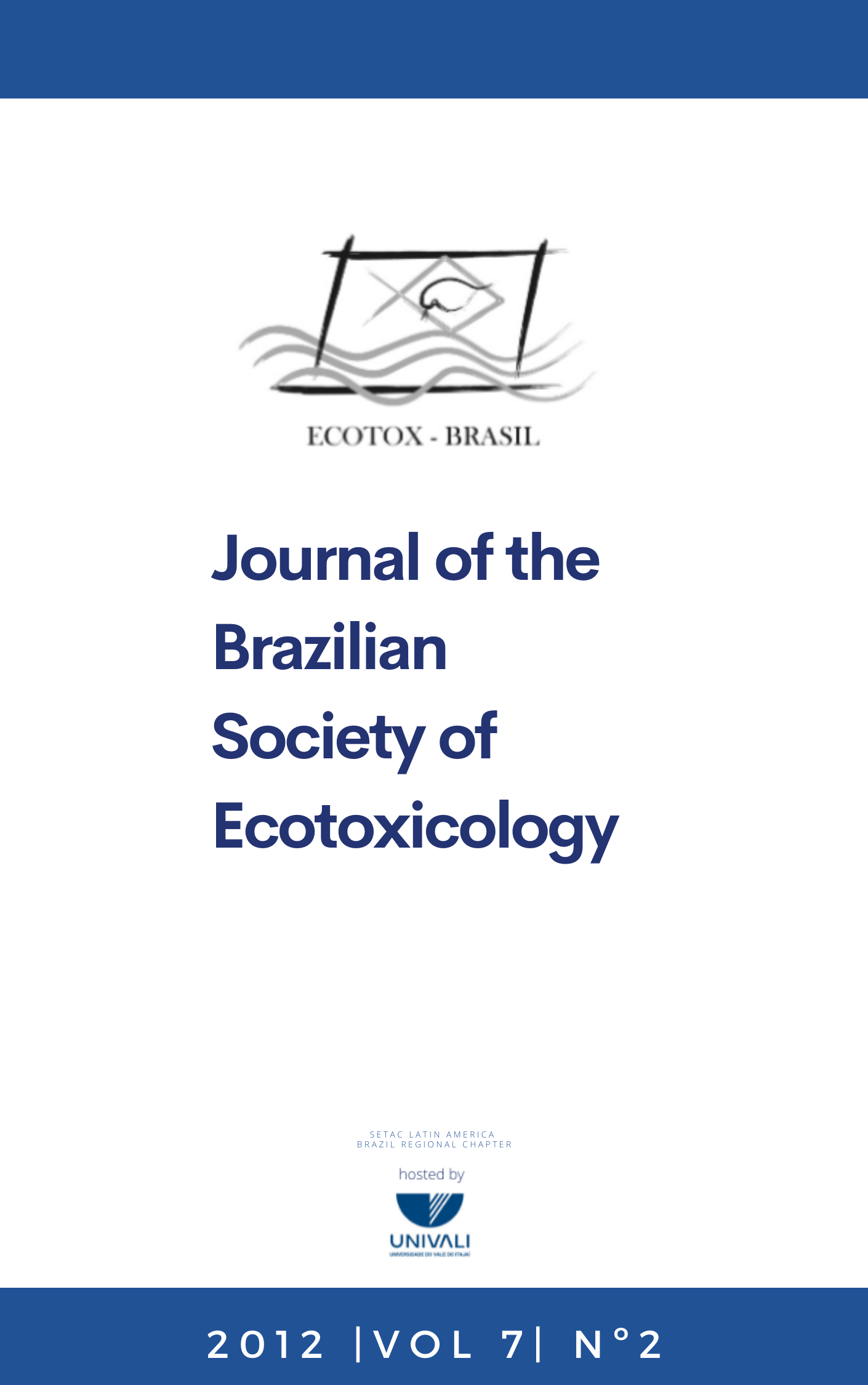Key Issues in Aquatic Ecotoxicology in Brazil: A Critical Review
Abstract
Several studies have been questioning and encouraging paradigms shift in ecotoxicology so it can better integrate ecological aspects. In tropical countries, like Brazil, it is still a developing issue. The present study aimed to evaluate the use of Aquatic Ecotoxicology in Brazil based on the following key issues: the criteria for test organism selection; the most used species, routes, types of exposures and endpoints, and; the importance given to multispecies and in situ tests. A total of 227 publications authored by Brazilian researchers were analyzed and it was observed that among the reasons for test organism selection, its origin (native species) was the most used. However, 48% of the reviewed studies did not report the reasons for species selection. Among the most used species are respectively: Daphnia magna, Daphnia similis, and Danio rerio. In situ assays, as well as multispecies test, represented less than 5% of all publications. Acute laboratory toxicity tests, using water as route of exposure evaluating mortality as endpoint were the most frequent tests. The present work identified that (i) the majority of assays used standardized tests with exotic species; (ii) few in situ methods were developed; (iii) few studies used sediment as route of exposure, and (iv) few methods were developed at higher levels of biological organization. Thus, the results of this work suggest that there is a need for more ecologically relevant tests, such as multispecies and in situ tests in Brazil.
Key Words: Aquatic Ecotoxicology, Critical Review, Key Issues, Paradigms, Tropical Countries, Brazil.
Downloads
How to Cite
Issue
Section
License
Copyright © 2006 ECOTOX-Brasil
Copyright notice: It is a condition for publication that manuscripts submitted to this journal have not yet been published and will not be simultaneously submitted or published elsewhere. By submitting a manuscript, the authors agree that copyright for their article is transferred to the Sociedade Brasileira de Ecotoxicologia (ECOTOX-Brasil) if and when the article is accepted for publication. The copyright covers the exclusive rights to reproduce and distribute articles, including reprints, photographic reproductions or any other reproduction of a similar nature, including translations. No part of this publication may be reproduced, stored in a retrieval system or transmitted in any form or by any means, electronic, mechanical, photocopying, recording or otherwise, without permission of the publisher.
Notice: While every effort is made by the EEC, editors and editorial board to see that no inaccurate or misleading data, opinions or statements appear in this journal, they wish to make it clear that the contents of the articles and advertisements published herein are the sole responsibility of the contributors or advertisers concerned. Accordingly, the EEC, the editorial board and editors and their respective employees, officers and agents accept no responsibility or liability whatsoever for the consequences of any inaccurate or misleading data, opinion or statement.




